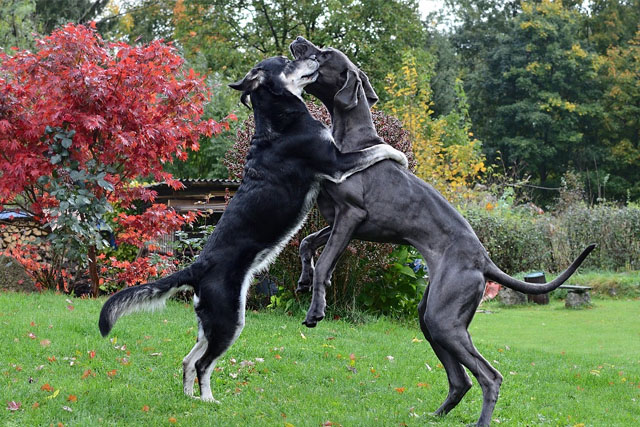



Before bringing a second dog into your home, it's important to assess the compatibility between the new dog and your current dog. Consider factors such as age, size, energy level, and temperament. Dogs that have similar traits are more likely to get along well. If possible, try to introduce the dogs beforehand in a neutral setting to see how they interact with each other.
When introducing a second dog into the home, it's crucial to take things slow and allow for gradual introductions. Start by allowing the dogs to sniff each other through a gate or a fence. Then, you can progress to short, supervised meetings on leash. Gradually increase the duration of these interactions as the dogs become more comfortable with each other.
When introducing a new dog into your home, it's best to choose a neutral territory for the initial meeting. This can be a park or a friend's backyard. By introducing the dogs in a neutral space, you can help prevent territorial behavior and reduce the chances of any potential conflicts.
During the initial stages of introducing a second dog into the home, it's important to closely supervise their interactions. Keep a close eye on their body language and intervene if you notice any signs of aggression or tension. It's also important to give each dog their own space and avoid forcing them to interact if they seem uncomfortable.
When bringing a second dog into your home, it's essential to provide separate spaces for each dog. This includes separate sleeping areas, feeding stations, and toys. Giving each dog their own space helps prevent resource guarding and reduces the chances of any potential conflicts over territory.
Introducing a second dog into the home can disrupt the established routines of your current dog. To minimize stress and help with the transition, try to maintain your current dog's routine as much as possible. Stick to regular feeding times, exercise schedules, and training sessions. This consistency can help both dogs feel more secure and comfortable in their new dynamic.
When introducing a second dog into the home, it's important to use positive reinforcement techniques to encourage good behavior and build positive associations. Reward both dogs for calm and friendly interactions with treats, praise, and affection. This helps create a positive and harmonious environment for both dogs.
If you're having difficulties introducing a second dog into your home or if there are signs of aggression or tension between the dogs, it's important to seek professional help. A professional dog trainer or behaviorist can provide guidance and support to ensure a smooth transition and help address any issues that may arise.
Introducing a second dog into the home can be an exciting but challenging process. By following these top tips, you can help ensure a smooth transition and create a harmonious environment for both dogs to thrive.
Related posts